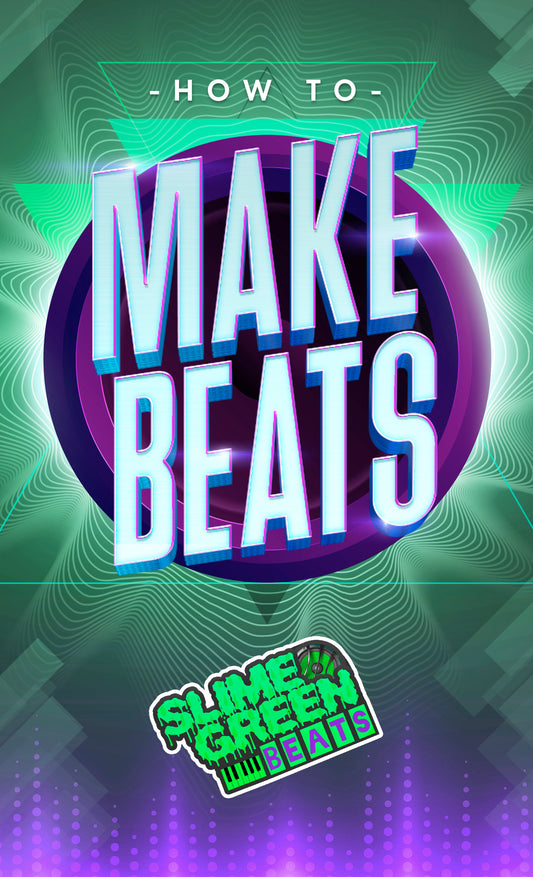Entering the world of hip hop beatmaking is like stepping into a realm where creativity knows no bounds. It's a space where rhythm meets poetry, and where your musical imagination can flourish. This guide is designed to usher beginners into the art and science of hip hop production, offering essential tips, resources, and inspiration to start crafting your own beats. With practice and passion, you'll soon be on your way to making hip hop beats that resonate with listeners and maybe even shake the industry.
Understanding the Basics of Hip Hop Beatmaking
Hip hop beatmaking is more than just putting together kicks, snares, and hi-hats. It's about creating a vibe that speaks to the soul, a rhythm that makes the body move, and a melody that tells a story. At its core, beatmaking involves sampling, sequencing, and sound design.
Sampling: The Heart of Hip Hop
Sampling is a cornerstone of hip hop production. It involves taking a snippet of sound from a pre-existing record and transforming it into a new piece of music. This can be a riff, a vocal phrase, or even ambient noise. The key is to find samples that inspire you and fit the mood you’re trying to create.
Sequencing: Laying Down the Beat
Sequencing is the process of arranging your samples, drum sounds, and other musical elements into a cohesive beat. Most producers use a Digital Audio Workstation (DAW) like FL Studio, Ableton Live, and Logic Pro to sequence their beats. The goal is to establish a groove with your drums and bass that serves as the foundation for your track.
Sound Design: Crafting Your Unique Sound
Sound design is all about creating custom sounds for your beats. This can involve tweaking presets on synthesizers, manipulating samples, or even recording your own sounds. The aim is to develop a signature sound that sets your beats apart from the rest.
Getting Started with Your First Beat
Choosing Your Equipment
To start making beats, you’ll need a few key pieces of equipment:
- A computer with a DAW installed
- A MIDI keyboard or pad controller
- Studio headphones or monitors
- A decent microphone (if you plan to record vocals or live instruments)
Finding Inspiration and Samples
Inspiration can come from anywhere—old records, modern music, nature sounds, or even everyday noises. Websites like Slime Green Beats offer a treasure trove of beats for sale that can inspire your own creations. Additionally, their free melody loops pack is an excellent resource for finding unique sounds to incorporate into your beats.
Creating Your First Beat
- Start with the Drums: Most hip hop beats start with laying down a solid drum pattern. Use your DAW to sequence your kicks, snares, and hi-hats into a groove that feels right.
- Add the Bass: The bass line is crucial for adding depth and vibe to your beat. Experiment with different bass sounds until you find one that complements your drum pattern.
- Incorporate Melody: Use samples or record your own melodies to add to the track. This is where your creativity can really shine.
- Arrange Your Beat: Once you have your basic elements, start arranging your beat into a full song structure with verses, choruses, and breaks.
- Mix Your Beat: Balance the levels of each element in your beat, apply EQ and compression, and make sure everything sounds cohesive.
Tips for Successful Beatmaking
- Be Patient: Learning to make beats takes time and practice. Don’t get discouraged if your first few attempts don’t sound like hits.
- Stay Inspired: Listen to a wide range of music, not just hip hop, to keep your creative juices flowing.
- Learn Your Tools: Spend time getting to know your DAW and equipment. The better you understand your tools, the more effectively you can bring your ideas to life.
- Connect with Other Producers: Join online forums, social media groups, or local music production meetups to learn from others and share your own experiences.
Expanding Your Skills
As you become more comfortable with the basics, start experimenting with advanced techniques like sidechain compression, advanced sampling methods, and mastering. There are countless tutorials online that can help you refine your skills and take your beats to the next level.
Conclusion
Hip hop beatmaking is an exciting journey that blends technology with creativity. By starting with the basics and gradually expanding your skills, you can develop your unique sound and contribute to the rich tapestry of hip hop music. Remember, the key to becoming a great producer is not just mastering your equipment, but also staying true to your artistic vision. So grab your tools, dive into the resources available at Slime Green Beats, and start making beats that tell your story.








